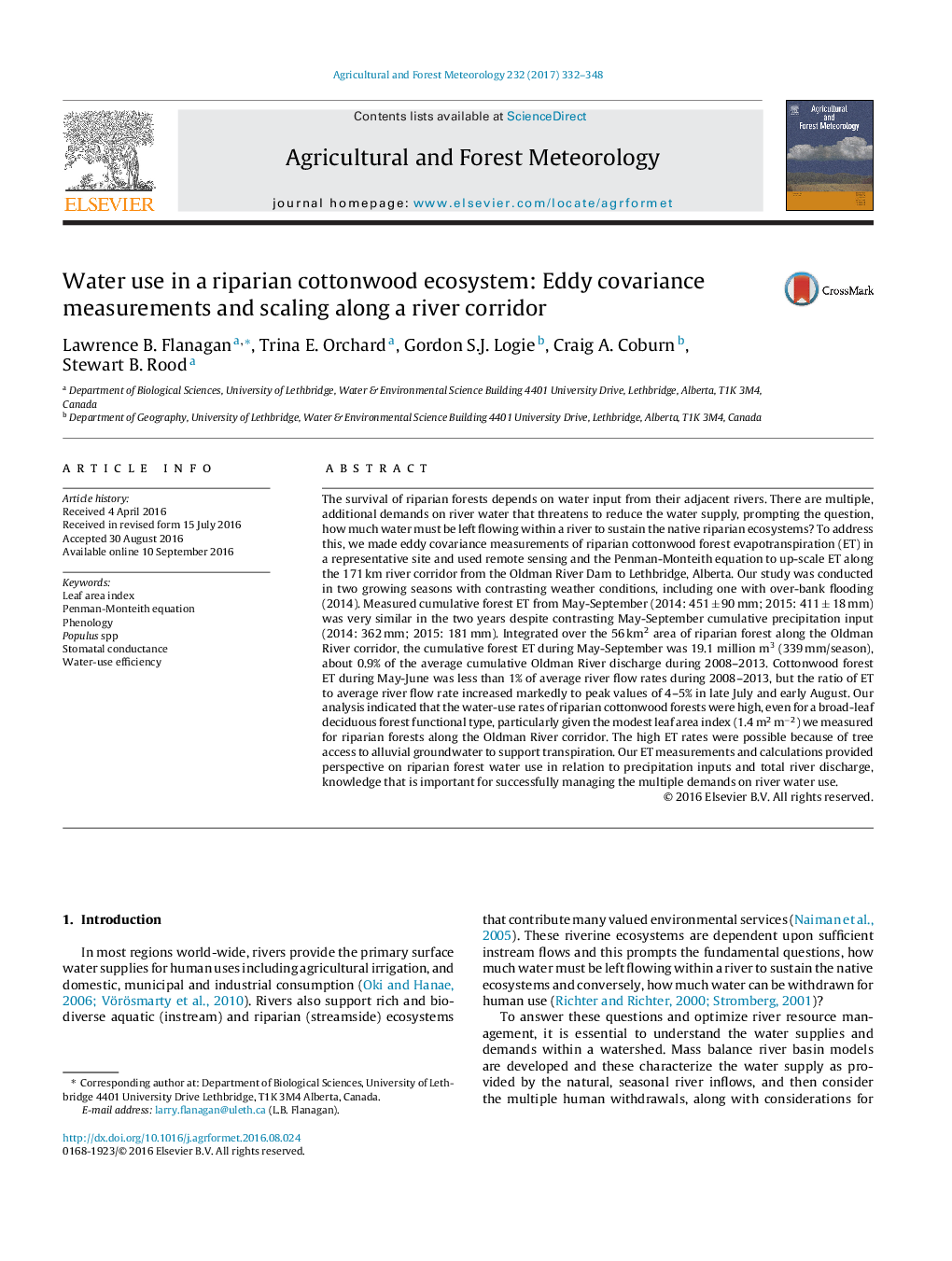| کد مقاله | کد نشریه | سال انتشار | مقاله انگلیسی | نسخه تمام متن |
|---|---|---|---|---|
| 6458099 | 1420865 | 2017 | 17 صفحه PDF | دانلود رایگان |

- Cottonwood evapotranspiration (ET) was measured and up-scaled along a river.
- Cumulative ET was very similar in 2 years despite contrasting precipitation input.
- Growing season ET was approximately 1% of average river flow rates.
- Ratio of ET to river flow increased markedly to peak values of 4-5% in August.
- Cottonwood water use was high because of tree access to alluvial groundwater.
The survival of riparian forests depends on water input from their adjacent rivers. There are multiple, additional demands on river water that threatens to reduce the water supply, prompting the question, how much water must be left flowing within a river to sustain the native riparian ecosystems? To address this, we made eddy covariance measurements of riparian cottonwood forest evapotranspiration (ET) in a representative site and used remote sensing and the Penman-Monteith equation to up-scale ET along the 171 km river corridor from the Oldman River Dam to Lethbridge, Alberta. Our study was conducted in two growing seasons with contrasting weather conditions, including one with over-bank flooding (2014). Measured cumulative forest ET from May-September (2014: 451 ± 90 mm; 2015: 411 ± 18 mm) was very similar in the two years despite contrasting May-September cumulative precipitation input (2014: 362 mm; 2015: 181 mm). Integrated over the 56 km2 area of riparian forest along the Oldman River corridor, the cumulative forest ET during May-September was 19.1 million m3 (339 mm/season), about 0.9% of the average cumulative Oldman River discharge during 2008-2013. Cottonwood forest ET during May-June was less than 1% of average river flow rates during 2008-2013, but the ratio of ET to average river flow rate increased markedly to peak values of 4-5% in late July and early August. Our analysis indicated that the water-use rates of riparian cottonwood forests were high, even for a broad-leaf deciduous forest functional type, particularly given the modest leaf area index (1.4 m2 mâ2) we measured for riparian forests along the Oldman River corridor. The high ET rates were possible because of tree access to alluvial groundwater to support transpiration. Our ET measurements and calculations provided perspective on riparian forest water use in relation to precipitation inputs and total river discharge, knowledge that is important for successfully managing the multiple demands on river water use.
Journal: Agricultural and Forest Meteorology - Volume 232, 15 January 2017, Pages 332-348